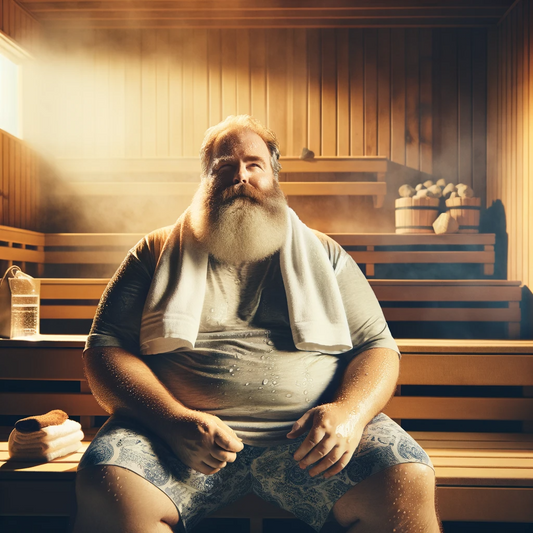As you embark on the journey of purchasing a sauna, your mind understandably starts to teem with several questions. One question you are likely wondering is about the assembly and installation. Specifically, many folks find themselves pondering the necessity of a professional electrician during the setup. Let's dive deep into this topic, shedding light on it with guidance from the industry's top professionals, focusing on the details concerning sauna power and the electrical set-up process.
The first thing to know before we jump in is that every sauna manufacturer and brand does it differently. Depending on the type of sauna (traditional wet / dry, infrared, wood heated), you will get very different answers. So this article will not be able to address your exact model, as there are countless different models out there. We do strive to include this information in our product detail pages. It may often recommend you hire a certified electrician, or some may say it simply requires a dedicated 15 or 20 amp breaker and a 110 or 120 volt outlet.
TLDR - the Gist of It
Please make sure you are clear on the electrical requirements for the sauna you’re interested in before purchasing. It’s always best to consult with an electrician about your specific situation and needs. There are many factors that will be considered by an electrician to determine if and how your preferred sauna can be accommodated.
Can I just plug it into the outlet?
Small or Medium Infrared-only Saunas (~4 people or less)
In case you are planning to invest in a medium or smaller infrared-only saunas, you'll be delighted to know that most of these saunas usually gel well with a standard electrical outlet (110 or 120 volts). This may not always be the case, but generally speaking, infrared heaters require less energy so they don’t usually require hardwired installation or a larger 220 or 240 volt outlet. As an example, this small Barrett 1-Person Indoor Infrared sauna - with Canadian Hemlock wood and Carbon Heaters requires a dedicated 15 amp breaker to a standard 120 volt outlet.
Larger Infrared-only Saunas (> 4-5 people or more)
As you move into the larger saunas geared toward > 5 or 6 people, you have more infrared heater units inside and those tend to require 220 or 240 volts. Take note that while many folks who are not electricians may think 220 volt and assume they know the plug, that the plug used for each sauna may also vary. For instance, this Rustic Indoor 4-Person Corner Full Spectrum Infrared Sauna requires a 20 amp minimum (30 amp recommended) breaker with a 220 or 240 volt NEMA 6-20p outlet. Here lies my point that this 4 person model does have greater electrical requirements even though it’s a 4-person sauna.
Hybrid Infrared and Electric Heater Saunas
If you are interested in the hybrid saunas, which combine infrared heaters and usually electric heaters, then things get a bit more complicated. Often this will require two dedicated breakers, one for each type of heater. For example, this Sapphire 2-Person Indoor Hybrid Sauna - both Infrared and Traditional Heating requires two 20 or 30 amp breakers, each with their own 220 - 240 volt outlet, one for the infrared heaters, and another for the electric heater.
Electric Heated Saunas (without any infrared heaters)
In this category of electric heaters, such as the Harvia, Scandia, or HUUM brands, it also varies here. Sometimes these heaters are hardwired into the electrical panel or subpanel (much like a hot tub). Other times, they can work with a 220 or 240 volt outlet.
Entering the arena of steam, or what some call hot-rock saunas, we encounter relatively more complex territory. These saunas, due to their high power requirements, typically require hard-wiring straight to your home's primary electrical system. Implementing 240-volt outlets along with special circuit breakers may be mandated to cope with the intense power usage. This high demand for power usage may necessitate professional electricians. A feature piece in the Electrical Contractor Magazine highlighted how a faulty installation can spiral down into poor performance, sky-high energy consumption, and even fire perils. Hence, it becomes absolutely imperative to have this task executed by a certified professional. This step guarantees both safe and optimal usage of your sauna.
Does this mean I can install it on my own?
At the risk of sounding like a broken record, the answer largely depends on the type of sauna in question. Some sauna kits are designed for a more straightforward DIY setup, but one must tread carefully here. Even a small error could potentially lead to a dip in the overall performance or even worse - safety concerns. This sentiment was underlined in a Swedish study on sauna-related injuries conducted by Eriksson and Kajermo (1995)[1]. It stressed the crucial role correct installation plays in eliminating potential incidents. Therefore, when dealing with intricate setups linked to traditional or dry saunas that come with power heating elements, roping in professional help is a prudent course of action.
Wrapping it up, while some uncomplicated sauna kits can easily be connected to your existing home system, larger, and power-hungry saunas will call for a professional installation to ensure robust performance and safety. Whenever you find yourself filled with uncertainty, it's always best to reach out to a professional who can walk you through the process.
References:
[1] Eriksson, M., & Kajermo, K. (1995). Sauna-related injuries in Sweden. Burns, 21(2), 96-98.




